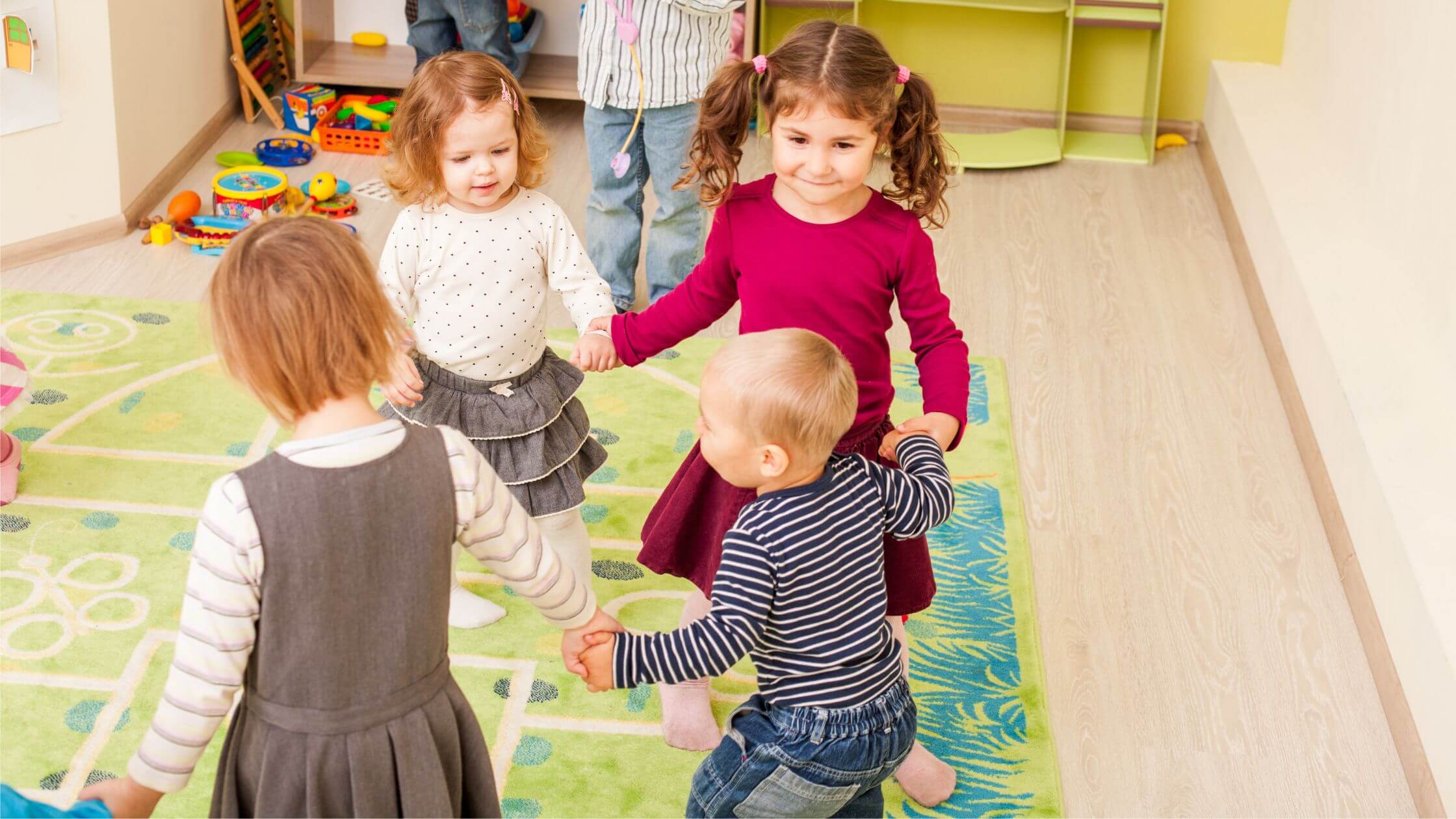Young children do not always have the verbal skills to tell us how they feel, let alone articulate complex emotions. This is where movement serves as a natural outlet and emotional release for their feelings, ranging from joy to frustration and anger. Can you imagine being unable to express your emotions verbally? Frustrating! I always visualize the film “Inside Out!” and all the different emotions whirling around in our heads that control our feelings and how our body reacts to the feelings.
Did you know that different types of movement can help you express specific emotions? Fast movements can express excitement or fear, while slower movements can show sadness or contemplation.
Not only does encouraging movement help your little ones express their emotions, but it also benefits their physical and mental well-being. Research shows repeatedly that regular physical activity is linked to improved mood and emotional resilience in children, making it an essential part of their development. According to developmental psychologists, engaging in physical activity can enhance emotional intelligence, helping children to understand, express, and manage their feelings.
To better understand how movement serves this purpose, why don’t you explore it together at the end of the day? As an individual share with your colleagues how your day made you feel but through movement – no words and remember “what happens in Vegas stays in Vegas!”
Once you understand how it makes you feel as an adult, you will see how beneficial it is to encourage your children to release their feelings through movement.
Benefits And Activities To Help Express And Regulate Emotions
Pent-up energy and emotion:
High-energy activities like dancing or jumping allow children and you, to release pent-up energy, tension, and feelings. Creating a physical outlet can help reduce anxiety and frustration, promoting a sense of calm. At home time, a fun dance party can help everyone unwind and express joy.
Body Awareness and Regulation:
While high-energy movement can release pent-up emotions, slower, more mindful activities help us build awareness and control over our feelings. Engaging in movement helps everyone become more aware of our bodies and feelings. This awareness can lead to better emotional regulation as we all learn to identify when we feel overwhelmed or restless. Activities like yoga can enhance this awareness by teaching us to tune into our breathing and body sensations. Studies have shown that practising mindfulness through movement can significantly improve emotional stability.
Creative Expression:
When we express ourselves through movement or role-play, we can explore various ways to convey emotions, enhancing our emotional vocabulary. Encouraging your children to act out their favourite stories with you can be a fun way to integrate creative expression into the daily routine.
While understanding these benefits is crucial, it’s equally important to consider how we can actively support children in expressing their emotions through movement.
Helping Your Children Express Their Feelings With Movement
Model Movement:
As adults, it is important to model how to express emotions through movement. Show your children that it’s okay to be silly and to move freely, encouraging a positive association with physical expression. Participating together in these activities can strengthen your bond and create lasting memories. Research indicates that children learn by observing adults, making your involvement crucial in creating a positive space.
Safe Space:
Providing a safe and encouraging environment fosters emotional exploration and creativity which helps your children feel free to move and express their feelings.
Recognising Emotions:
Help your children label their emotions as they engage in movement. For example, ask questions like, “How does your body feel when you’re happy?” They might respond with something like, “I feel like jumping!” or “I feel light, like dancing.” Similarly, you could ask, “What happens with your body when you’re sad or upset?” and they might say, “I feel like curling up” or “I feel heavy and want to sit down.” This connection between feelings and physical responses promotes emotional intelligence. Discussing emotions during movement activities can lead to deeper conversations about feelings.
Fun Activities To Include In Our Day
Nature walk: Exploring nature can evoke different feelings. Encourage children to express how the sights, sounds, and smells make them feel as they walk. This can also be an opportunity to teach them about mindfulness in nature.
Dancing: Crank up the music and move with the children to help them express joy and excitement while releasing built-up energy.
Jumping on a trampoline: This is a fun way for your children, and you, to let out frustrations and feel invigorated.
Yoga: Simple yoga poses can help children tune into their bodies and understand their feelings. Incorporate breathing exercises for a calming effect and consider practising together to enhance the connection.
Movement Games: Activities like “Freeze Dance”, “Follow the Leader”, and “Simon Says” allow children to explore different ways to move and build relationships.
Obstacle Courses: Create a fun and challenging course that allows your children to express determination and achievement as they navigate it. Why not incorporate various physical challenges reflecting emotional states – climbing over hurdles when feeling brave and courageous?
Creative Role-Play: Encouraging your children to role-play stories or scenarios can help them explore various emotions and the physical expressions that accompany them.
There are so many engaging and fun activities at your disposal, as educators, to help you foster emotional growth in children why not add movement as well?
Takeaway
Movement is a powerful tool for young children’s emotional expression. By incorporating various physical activities into daily routines, you are supporting their emotional development and well-being. Don’t forget…. that prioritising movement and physical well-being is also important for you.
For more information about the impact of physical activity on mental health, you can explore resources from the mental health charity MIND here:
https://www.mind.org.uk/information-support/tips-for-everyday-living/physical-activity-exercise-and-mental-health/how-are-physical-activity-and-mental-health-connected/

